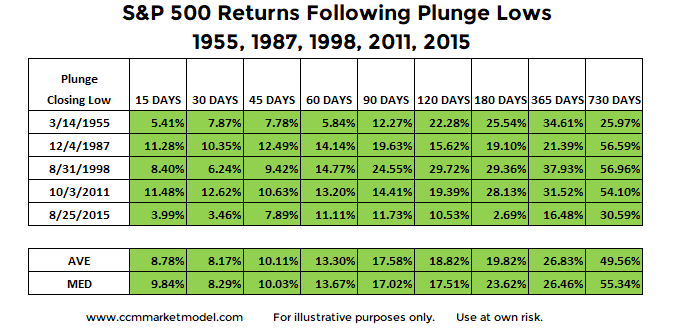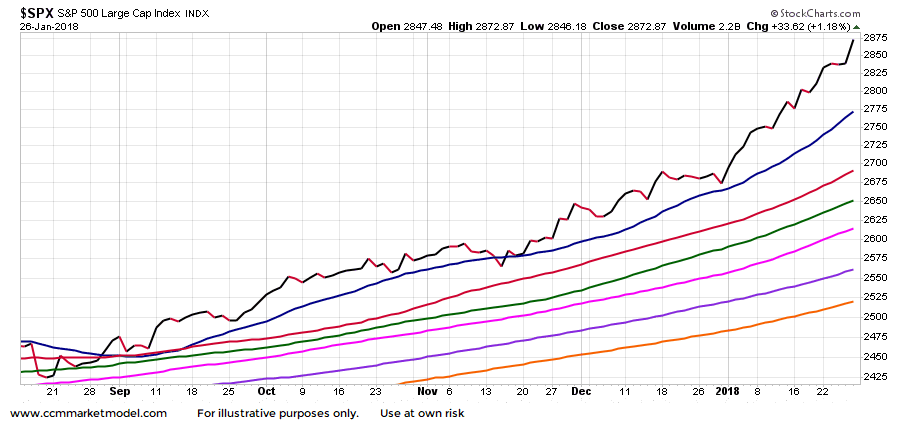1955 IS THE BEST MATCH
When we look at trends on multiple timeframes, it helps us understand how market participants are interpreting all fundamental and technical data looking out a few days to a few years. It is pretty easy to see the charts from 1987, 1998, 2000, 2007, 2011, and 2015 have numerous forms of waning trend evidence, which is indicative of waning confidence in the economy and markets. The two charts with the strongest and most sustainable-looking trends are 1955 and 2018. The 2018 chart shares almost nothing with the 1987, 1998, 2000, 2007, 2011, and 2015 charts.
DISLOCATIONS RARE FROM STRONG PROFILES
It is extremely rare for markets to have a dislocation event or plunge with a profile as strong as the one that was present on January 26, 2018. Since markets can do anything at anytime, meaning even very low probability outcomes can occur, we always remain open to all outcomes, from extremely bullish to extremely bearish. If you know your market history, you know bad things happened next in 1987, 1998, 2000, 2007, 2011, and 2015.
WHAT HAPPENED NEXT IN 1955?
In the 1955 case, stocks experienced a sharp 6.8% correction and then resumed their well-defined bullish trend, tacking on an additional 42.3% over the next 510 calendar days. If you are keeping score at home, the S&P 500's correction in 2018, as of Monday's close, was 7.8% (similar to 1955). In order to compare apples to apples, we need to compare 6.8% to 2018 as of Tuesday's close (rather than intraday Tuesday).











